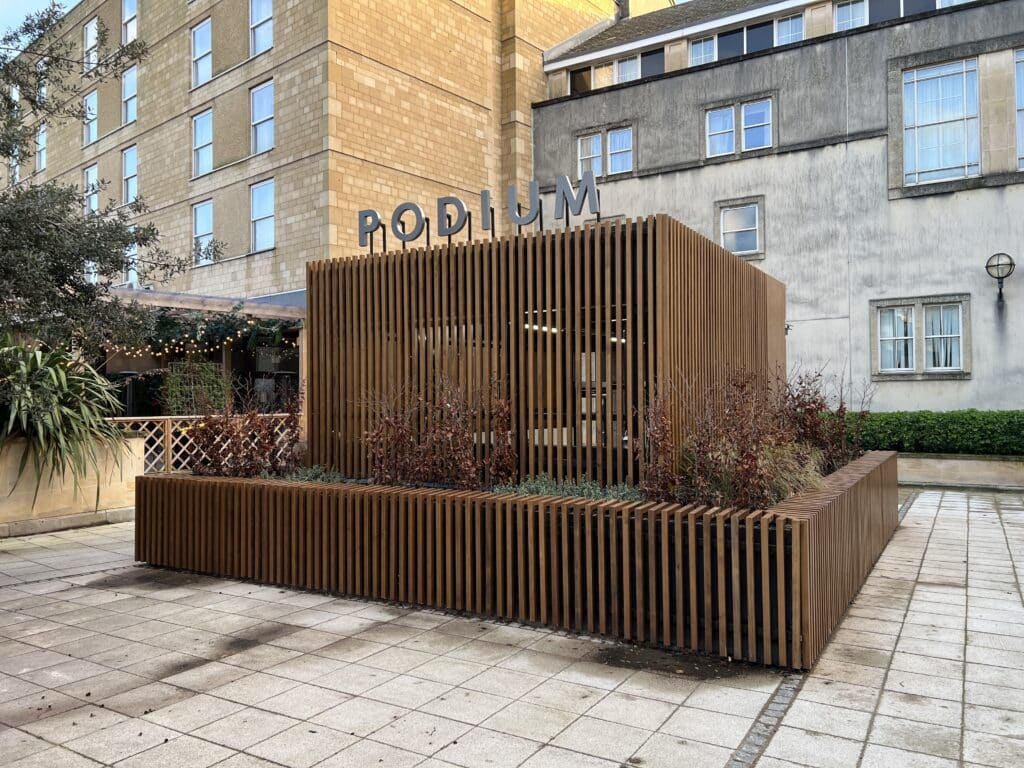03.21.2023 Materials are key to success when renovating on a UNESCO World Heritage site
March 21, 2023
Redesigning a run down 1960s Brutalist multi-story carpark on a tricky riverside plot in a busy town centre is a difficult proposition by anyone’s standards. Throw into the mix that it is in Bath, one of the UK’s most recently added UNESCO World Heritage sites and the complexities seriously ramp up. But this is exactly where we found ourselves as we took on the Bath Podium car park renovation project. It was a challenge, but with meticulous planning, collaboration and attention to detail, it has also been a huge success.

The key to getting this project right was choosing the right materials for the three main areas – the car park itself and the two stair cores. We were of course restricted by the Bath Pattern Book, which stipulates exactly what can and can’t be used, but the joy of working in architecture today is that you have a wealth of options at your disposal. We ended up with three very different solutions for three very different design challenges, but all as part of one very special architectural project.
Making the car park safe
The multi-story car park was in a very poor state of repair, the concrete was failing and there were no real floor or wall coverings and all pipes and wires were exposed. But the biggest issue was the open sides and the fact that the existing railings did not meet current building regulations. There was a huge safety issue. We needed to find a clever way to infill the dangerous openings, while also meeting the local authority’s strict conditions for how everything should look now that Bath is a UNESCO World Heritage site.
After careful consideration, we chose Webnet – a very slimline, metal mesh, that would provide the necessary protection, while not making the car park feel enclosed. And because it is so lightweight, it is invisible when viewed from the outside, meaning it had no impact on the wider context and views. Webnet is often used to provide edge protection to ancient buildings and is already used on a number of UNESCO protected sites around the UK. It was the perfect solution.
Knowing when to push boundaries and when to push back
When it came to the stair cores, we had two very different locations – Core 2 is set back from the street and sits in the middle of a courtyard, while Core 3 is right on the street. This meant we were able to push the boundaries a bit more with the design for Core 2. We considered a number of materials – Bath stone, perforated metal, timber and polycarbonate. In the end, we went for timber, however we needed a clever solution to the problem that the Bath Pattern book stipulates that only Iroko wood can be used, but the fact that Iroko is classified as a vulnerable species meant that as a material it didn’t meet the client’s Sustainability Framework requirements.
Accoya proved to be an incredibly neat solution. As a wood it comes from well managed forests and has very high sustainability credentials. The fact that it could also be easily stained to perfectly replicate the look of Iroko sealed the deal. We were also able to add a living roof to this structure to help improve biodiversity and also the view of the building from the library and hotel windows that look down on it.
But due to the location of Core 2, we could not replicate the timber cladding here. We needed to revisit the materials options. Our review of Bath’s town centre materials – and the Bath Pattern book – lead us quickly to using black metal. A choice that would also pull back the impact of this structure on the wider context and views.
But this project would not have happened without the hard work and dedication of a lot of people and a real commitment to collaboration.
With thanks to:
Makers, structural refurbishment specialist www.makers.biz
Miko Engineering www.mikoengineering.co.uk
Firstplan, town planning consultancy www.firstplan.co.uk/
DTZ investors www.dtzinvestors.com/en
Mark Brock, consulting engineers www.mbce.co.uk
